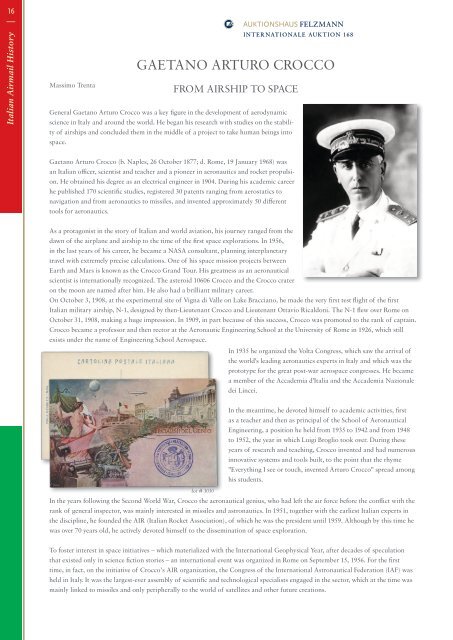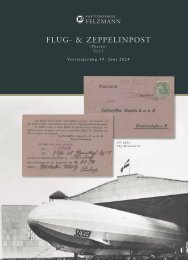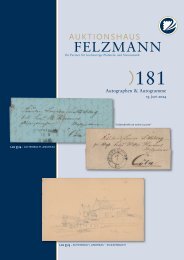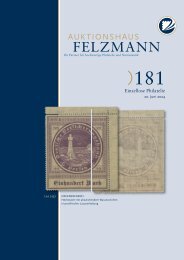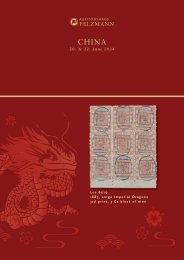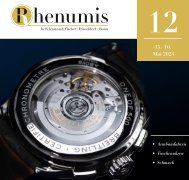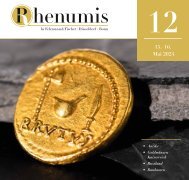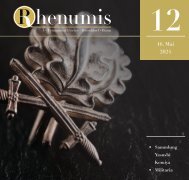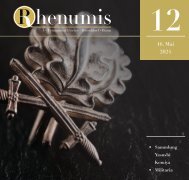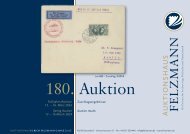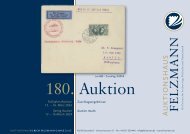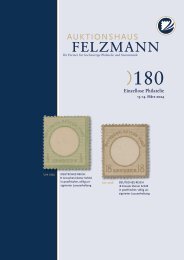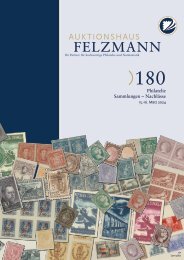Auktion168-02-Philatelie_Flug&Zeppelinpost
Sie wollen auch ein ePaper? Erhöhen Sie die Reichweite Ihrer Titel.
YUMPU macht aus Druck-PDFs automatisch weboptimierte ePaper, die Google liebt.
16<br />
Italian Airmail History |<br />
Massimo Trenta<br />
General Gaetano Arturo Crocco was a key figure in the development of aerodynamic<br />
science in Italy and around the world. He began his research with studies on the stability<br />
of airships and concluded them in the middle of a project to take human beings into<br />
space.<br />
INTERNATIONALE AUKTION 168<br />
GAETANO ARTURO CROCCO<br />
FROM AIRSHIP TO SPACE<br />
Gaetano Arturo Crocco (b. Naples, 26 October 1877; d. Rome, 19 January 1968) was<br />
an Italian officer, scientist and teacher and a pioneer in aeronautics and rocket propulsion.<br />
He obtained his degree as an electrical engineer in 1904. During his academic career<br />
he published 170 scientific studies, registered 30 patents ranging from aerostatics to<br />
navigation and from aeronautics to missiles, and invented approximately 50 different<br />
tools for aeronautics.<br />
As a protagonist in the story of Italian and world aviation, his journey ranged from the<br />
dawn of the airplane and airship to the time of the first space explorations. In 1956,<br />
in the last years of his career, he became a NASA consultant, planning interplanetary<br />
travel with extremely precise calculations. One of his space mission projects between<br />
Earth and Mars is known as the Crocco Grand Tour. His greatness as an aeronautical<br />
scientist is internationally recognized. The asteroid 10606 Crocco and the Crocco crater<br />
on the moon are named after him. He also had a brilliant military career.<br />
On October 3, 1908, at the experimental site of Vigna di Valle on Lake Bracciano, he made the very first test flight of the first<br />
Italian military airship, N-1, designed by then-Lieutenant Crocco and Lieutenant Ottavio Ricaldoni. The N-1 flew over Rome on<br />
October 31, 1908, making a huge impression. In 1909, in part because of this success, Crocco was promoted to the rank of captain.<br />
Crocco became a professor and then rector at the Aeronautic Engineering School at the University of Rome in 1926, which still<br />
exists under the name of Engineering School Aerospace.<br />
In 1935 he organized the Volta Congress, which saw the arrival of<br />
the world's leading aeronautics experts in Italy and which was the<br />
prototype for the great post-war aerospace congresses. He became<br />
a member of the Accademia d'Italia and the Accademia Nazionale<br />
dei Lincei.<br />
lot # 3030<br />
In the meantime, he devoted himself to academic activities, first<br />
as a teacher and then as principal of the School of Aeronautical<br />
Engineering, a position he held from 1935 to 1942 and from 1948<br />
to 1952, the year in which Luigi Broglio took over. During these<br />
years of research and teaching, Crocco invented and had numerous<br />
innovative systems and tools built, to the point that the rhyme<br />
"Everything I see or touch, invented Arturo Crocco" spread among<br />
his students.<br />
In the years following the Second World War, Crocco the aeronautical genius, who had left the air force before the conflict with the<br />
rank of general inspector, was mainly interested in missiles and astronautics. In 1951, together with the earliest Italian experts in<br />
the discipline, he founded the AIR (Italian Rocket Association), of which he was the president until 1959. Although by this time he<br />
was over 70 years old, he actively devoted himself to the dissemination of space exploration.<br />
To foster interest in space initiatives – which materialized with the International Geophysical Year, after decades of speculation<br />
that existed only in science fiction stories – an international event was organized in Rome on September 15, 1956. For the first<br />
time, in fact, on the initiative of Crocco’s AIR organization, the Congress of the International Astronautical Federation (IAF) was<br />
held in Italy. It was the largest-ever assembly of scientific and technological specialists engaged in the sector, which at the time was<br />
mainly linked to missiles and only peripherally to the world of satellites and other future creations.


